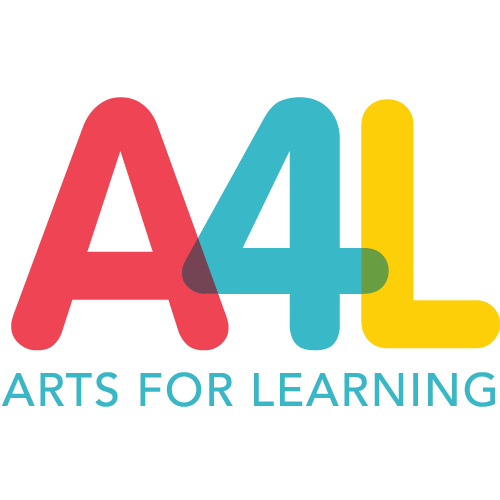A4L Wins ArtPlace America Creative Placemaking Grant for Wall (In) Project
Arts for Learning/Miami’s Wall (IN) Project is the Sole Florida Recipient of the Prestigious Artplace America’s 2017 National Creative Placemaking Fund

Project will partner with Academy Award Wining, Miami Playwright Tarrell Alvin McCraney and Prominent Artist, Designer and Educator, Chat Travieso
(December 5, 2017) Today, ArtPlace America announced that Arts for Learning/Miami (A4L)’s Wall (In) project has been chosen from nearly a thousand applications to receive funding through its 2017 National Creative Placemaking Fund.
ArtPlace received 987 applications in 2017, from which 70 finalists were selected and A4L is one of only 23 projects that will receive funding this year – the only in the state of Florida. ArtPlace has a deep commitment to investing in rural America, with almost 52% of this year’s funded projects working in rural communities.
ArtPlace’s National Creative Placemaking Fund is a highly competitive national program, which invests money in community development projects where artists, arts organizations, and arts and culture activity work to strengthen communities across 10 sectors of community planning and development.
Arts for Learning/Miami’s proposed Wall (In) is a multi-year collaborative project in which high school aged artists from Liberty City will research the remains of a segregation wall on NW 12th avenue and work to design a community-informed activation of the site. Participating youth will work alongside renowned homegrown artists Tarell Alvin McCraney and Chat Travieso to learn about public art and social engagement while developing leadership skills, and promoting equity and social justice.
“We are honored to receive this funding that will help bring the Wall (In) project to life – the project aims to provide a platform where young artists can discuss and explore notions of public space, history, context and civic engagement,” said Sheila Womble, Executive Director of Arts for Learning/Miami.
Wall (In) supports the development of the young residents’ personal power, self-esteem, and sense of purpose. Through Wall (In), youth will hone their planning and decision making skills, and build their cultural competence by working with different members of the community. They will speak to historians, activists, community leaders, and other stakeholders to research the history of Liberty City and the segregation wall and investigate the current state of the wall by mapping the remains and any existing plans for its future. Current project partners include the African Heritage Cultural Arts Center (Liberty City’s Historic art place), the Miami-Dade County Department of Cultural Affairs, residents, and resources such as the Black Archives.
“This year’s investments highlight critical dimensions of creative placemaking strategy that can provide great inspiration to communities across the country.” said F. Javier Torres, Director of National Grantmaking at ArtPlace. “We are deeply excited to announce these 23 new investments as our seventh cohort of funded projects through the National Creative Placemaking Fund.”
“Creative Placemaking seeks the full and robust integration of art and culture into the decisions that define the ebb and flow of community life. These projects embody what this looks like at its most effective,” said Rip Rapson, president and CEO of The Kresge Foundation and Chair of the ArtPlace President’s Council. “We were overwhelmed by the extraordinary commitment demonstrated in these projects – contributing to the growing understanding of creative placemaking efforts throughout the nation.”
Meet all of the 2017 funded projects here.
About Arts for Learning/Miami, Inc.
Arts for Learning (A4L) is a non-profit organization dedicated to advancing teaching and learning through the arts. As a leading source of arts programs in Miami, A4L provides traditional and arts-integrated instruction, student studio programs, afterschool and summer programs, high school internships, and teacher and artist professional development. A4L’s programs augment cognitive, social, and emotional development in children and youth. The programs also develop creativity, critical thinking, communication, problem solving skills as well as promote positive peer relations and cultivate self-efficacy. A4L partners with Miami-Dade County Public Schools, Miami-Dade County Department of Cultural Affairs, and Young Audiences – A4L’s national affiliate. A4L also serves as the South Florida Wolf Trap, a regional program of Wolf Trap Institute for Early Learning. A4L’s services are delivered to more than 5,000 children and youth in approximately 50 schools, preschools, after-school programs, and summer camps throughout Miami-Dade and Broward.
Arts for Learning’s programs are made possible with generous support from and partnership with: African Heritage Cultural Arts Center, All Kids Included, Broward County Public Schools, The Children’s Trust, Design and Architecture Senior High, Centro Mater Child Care Services, Inc., City of Hialeah, City of Miami, City of Miami Beach, City of Miramar, Doris Duke Charitable Foundation, Florida Department of State Division of Cultural Affairs, Jonathan D. Lewis Foundation, Miami Children’s Initiative, Miami-Dade County Department of Cultural Affairs and the Cultural Affairs Council, Miami-Dade County Mayor, and the Board of County Commissioners, Miami-Dade County Public Schools, The Miami Foundation, South Florida Cultural Consortium, and Young Audiences, Inc.
About ArtPlace America
ArtPlace America (ArtPlace) is a ten-year collaboration among 16 partner foundations, along with 8 federal agencies and 6 financial institutions, that works to position arts and culture as a core sector of comprehensive community planning and development in order to help strengthen the social, physical, and economic fabric of communities.
ArtPlace focuses its work on creative placemaking, projects in which art plays an intentional and integrated role in place-based community planning and development. This brings artists, arts organizations, and artistic activity into the suite of placemaking strategies pioneered by Jane Jacobs and her colleagues, who believed that community development must be locally informed, human-centric, and holistic.
###
